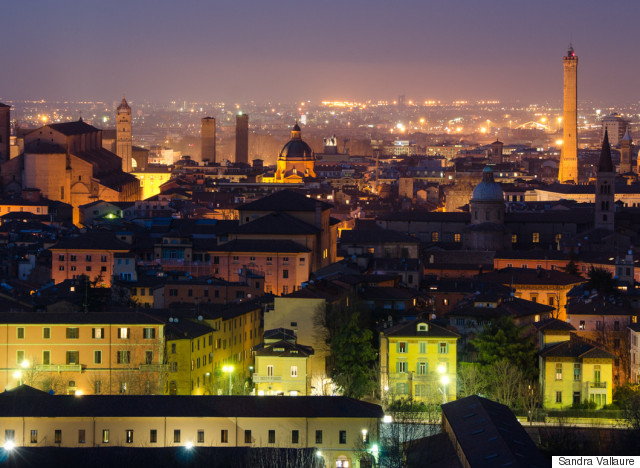
1. Don't obsess over your equipment
Have you ever thought that your photos would be better if you had more expensive, high-end equipment? Have you fallen into the trap of assuming that your camera is not good enough because your pictures don't seem to say anything?
Your equipment doesn't make the photo. You, as the photographer, make the photos.
Most photography equipment sold in the market today is conducive to producing great images. All you need to figure out is how to get the most out of it.
Forget about the latest trend and about buying a camera that's more expensive than the one you already have. Go out with the one you have, and find out how to get your equipment to perform at its best. Learn when to use one lens or another. And, of course, master basic photography skills, such as how to adjust aperture, shutter speed and ISO.
This may seem like the most obvious advice you've ever read. But for some strange reason, a lot of beginners believe that everything revolves around the equipment they have. Nothing is further from the truth.
2. Research your destination thoroughly 
Dedicate time to research your destination fully. And by "research" I mean gathering all the possible information on the best time of year to go, what to do and what to see, how to go from one place to another... It's an essential part of your trip, and one that will have a direct impact on your photography.
In addition to this basic research, don't forget to look into the visual characteristics of your destination. In other words, what's worth photographing? Look for opportunities such as popular festivals or celebrations.
Don't limit yourself to the information you find online. Talk to the hotel staff, go to the tourism office and speak with other travelers you meet on the way. Tell people about your interest in photograph and ask them for tips and suggestions.
The more information you have, the more ideas you'll have about what you want to photograph.
3. Look beyond that monument we all see
A lot of destinations have "places you can't miss" or "places you should photograph." Don't obsess over getting that postcard photo that everyone has. If you do, you will fall into the trap of ignoring places and elements around those places that could be equally -- if not even more -- interesting.
Don't let yourself get carried away by the excitement of being in a place for the first time. Force yourself to really look at your surroundings.
Be patient, because it can take time to find those little hidden treasures. In fact, that's why they're still hidden, because nobody has bothered to take the time to find them. Sharpen your vision and your photos will thank you for it.
4. Study natural light carefully
If you're not aware of the light that surrounds you, you will take photos of anything that gets your attention, regardless of light conditions. The photo you produce may catch someone's attention. Sometimes, it may even reflect what you wanted to express and how you felt in the moment you took it. But usually, none of that happens.
You should learn that there are different types of light and that your final result will depend to a large extent on light. Logically, this also means that you have the chance to pick the type of light in which you want to take a photo, and you can adjust your choices according to the feeling you seek to communicate.
Study the available light at the scene. Forget about that immediate snap and look for another possibility from another angle for example, or even at a different time of day. Take a few minutes to analyze where the light comes from, what type of light it is (hard or diffuse, cold or warm), where it's going to move, and evaluate the contrast.
5. Don't ignore artificial light
As you familiarize yourself with light and understand how it affects your photographs, you will tend to run away from artificial light, especially the flash. While it's true that many times it's best to avoid using flash, it's not the only source of artificial light you have at your disposal. If you decide to ignore all those light sources, you will never see how much you can achieve with them.
Examples of artificial light include a campfire in the countryside or a street lamp in an alley. Play with shadows, look for contrasts and don't forget reflections. They could be interesting tools that add a creative touch to your image.
6. Play around with composition
When you're traveling, the novelty, the exotic places, the different sounds and the penetrating smells could be overwhelming. They will probably make you forget that an image can work to convey an emotion or a mood, besides capturing a memory. In other words, that novelty will make you completely forget how to frame and compose your photographs.
Composition is what sets a great photo apart. Don't let being in a different place or not knowing the culture overwhelm you. Take your time and pay attention to the composition of your photos.
Something as simple as an uneven horizon could completely ruin an image that could have been fantastic. Focus on an interesting detail that appears at the forefront, look for spectacular backgrounds. Try to balance the elements, so that the frame is not overcrowded. And don't forget to change the angle or perspective.
If you think like a photographer and not like a tourist who is excited about being in a new place, you will be able to take pictures that hold meaning and tell a story. If you don't focus on composition, you will find yourself with a collection of random photos.
7. Don't think that good photos are the products of luck
Many images by other photographers may seem to be the result of chance or luck. It's very easy to think that the photographer was in the right place at the right time. The truth is, that's rarely the case.
Luck can play an important role when it comes to capturing certain types of images, but it's certainly not the only factor. Many experienced photographers will tell you that those "great moments" are created when chance and preparation meet.
What does preparation mean? Get a rough idea of what you want to photograph ahead of time. Then look for locations and familiarize yourself with them. Research where you can find interesting subjects and which scenarios have the most photographic potential.
8. Interact with your potential subject
Photographing strangers can be a discouraging task and, unfortunately, many shy away from interacting with people they don't know. It's possible to get sincere and powerful photographs without engaging in any interaction. You just need a zoom lens for that. But by limiting yourself to this type of photo, you miss out on opportunities to create something truly special.
Sometimes the interaction and connection you establish with the subject is evident in the photograph. There's a certain trust and openness perceived in the way the subject looks at you while you take the photo. Overcome the language barrier and develop non-verbal communication. Use your eyes, your facial expressions, and your body language to connect with the person.
Also, the benefits of such interaction and connection go beyond the obvious. When you establish a relationship with your subject, you're no longer a random passerby. You develop a bond with your subject. This fact alone will help you take photographs that otherwise wouldn't have been possible.
9. Get as close as you can 
This is a common mistake. Does the subject appear too small in your photo, becoming almost negligible? It's just the consequence of not following this piece of advice.
If you don't communicate with the person, you may not know how they would respond to your camera, so you prefer to keep a distance. Unfortunately, this may limit your creativity, and you may miss out on the more dramatic angles and perspectives you could get if you were closer to the subject.
10. Strive to be original
The famous monuments and popular places also have a big problem: everyone already knows them. Taking a photo that thousands of people before you haven't taken will be a challenging task, but it's not impossible.
A good option might be to start paying attention to details. And by details I mean things that appear mundane, like a stall at a local market, a drink your dinner companions are enjoying, or a section of a statue that has caught your attention. Anything works, as long as it gets people curious about your photos.
11. Take many (many) photos
The concept of "enough" is subjective. I personally think you've done "enough" when you've done the following: explored different angles and points of view, photographed one person in action and experimented with exposure and shutter speed and, if time permits, with different lenses.
Experience has shown me, sometimes cruelly, that it is always better to take more photos than I need. When you find yourself in a situation that is worth photographing, make the most of it, because it may not repeat itself. Nothing is worse than coming home, 2,000 miles later, to realize that you don't have photos of a specific place or of a person who made an impression on you.
12. Don't be afraid of separating from the group
Group trips have a lot of advantages and are a great way to travel. Unfortunately, they don't offer the best conditions for getting unique shots.
Imagine that your guide stops on the highway, by a mountain, so that you can capture that fantastic view. If you all stay in the same place, your photos will be identical to those shot by other people in your group. If you have time, look for another spot from which to take your photo, and look for a more original angle that others may have overlooked.
When you're in a city or any place full of people, step away from the group and look for unique opportunities. Put yourself in the shoes of your potential subject. How would you feel if you were faced with six cameras, shooting aggressively?
Avoid such harassment, and look for individual interactions so that you may get closer to potential subjects. When you're alone, you will have more space for spontaneity, and your photos will be more creative. Besides, you will not be influenced by other people in the group and you will be able to see and experience things in a unique way.
This post first appeared on HuffPost Spain. It has been translated into English and edited for clarity.